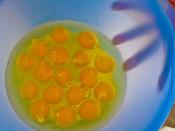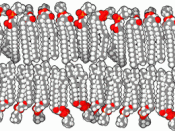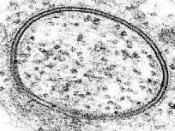This study guide is my completed questions to the questions that are issued by the teacher using the text "Biology" by Campbell and Reece.
Chapter 8: Membrane Structure and Function
1. Phospholipids consist of a hydrophilic head, and a hydrophobic tail. The cell membrane is a phospholipid bilayer two membranes thick. The bilayer is a stable boundary between two compartments because the molecular arrangement shelters the hydrophobic tails of the phospholipids from water while the hydrophilic heads stay in the water.
a. It was believed that only the hydrophilic heads of the phospholipids immersed in the water and their was no bilayer.
2. When the halves of the fractured membrane are viewed in the electron microscope, the interior of the bilayer looks cobblestoned, with protein particles wedged in a smooth matrix. This shows that membrane proteins are dispersed and individually inserted into the phospholipid bilayer, with only their hydrophilic regions out far enough from the bilayer to be exposed to water.
3. Membranes must be fluid to work properly. A membrane remains fluid as temperature decreases, until finally the phospholipids settle into a tight arrangement and the membrane becomes solid. When a membrane solidifies, enzymatic proteins in the membrane may become inactive.
a. A cell can change the lipid composition of their membranes as an adjustment to changing temperature. For example;, in winter wheat, the percentage of unsaturated phospholipids increases in autumn, an adaptation that keeps the membranes from solidifying during winter.
4. Membrane carbohydrates and proteins are important for a cell to recongnize another cell. Proteins also act as channels across the membrane to allow certain solutes out and in.
a. Changing a membranes composition will affect a membranes function because certain proteins for example are placed in certain spots for proper joining and recognition.
b. Transport- allows...


